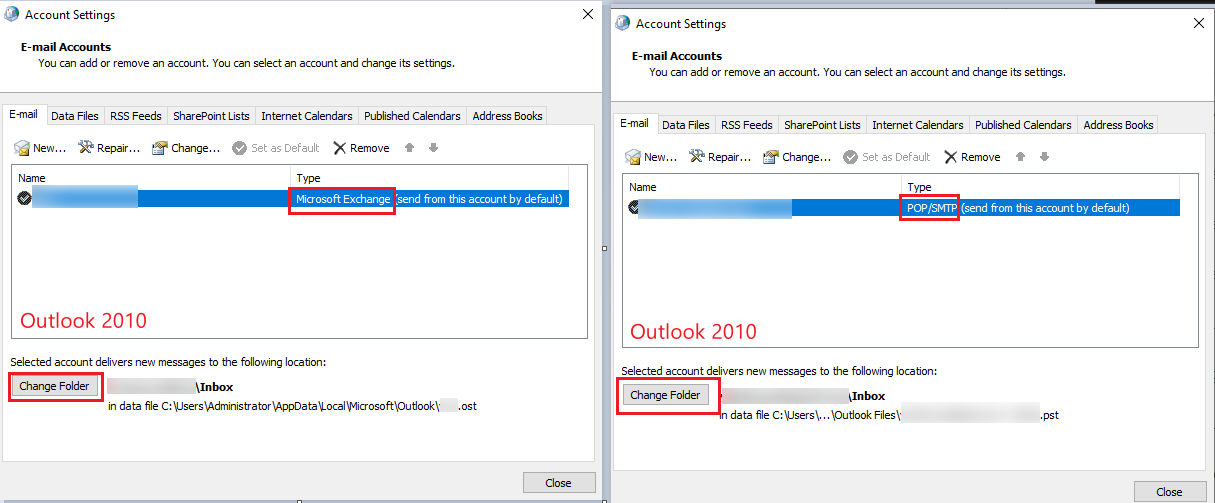Hi @NndnG ,
- Does path of both files vary depending on Outlook version (e.g. Outlook 2007, Outlook 2010, Outlook 2013, etc.) or Windows version (e.g. Windows 7, Windows 8.1, Windows 10, etc.)?
According to this official article, for .pst files, the path may vary a bit of Outlook upgraded from earlier versions of Outlook:
"Outlook Data Files (.pst) created by using Outlook 2013 or Outlook 2016 are typically saved on your computer in the Documents\Outlook Files folder. If you upgraded to Outlook on a computer that already had data files that were created in Microsoft Office Outlook 2007 or earlier, these files are saved in a different location in a hidden folder at drive:\Users\user\AppData\Local\Microsoft\Outlook."
For .ost files, as mentioned in the article above, the offline Outlook Data File (.ost) is saved at drive:\Users\user\AppData\Local\Microsoft\Outlook, so it won't vary depending on Outlook version.
When it comes to the Windows version, based on my research, there are basically no change since Windows 7 and above.
- In case of PST, I see Change folder, can I find this option irrespective of Outlook versions?
The “Change Folder” button for Exchange accounts has been removed since Outlook 2013 along with the deprecation of the option to deliver Exchange emails to a pst-file. Based on my understanding, this could be related to the fact that nowadays the size of Exchange mailboxes allowed by an organization is getting larger, so the need for off-loading mailbox data to pst-files is becoming less and less. If you still want to change the default path for PST, hopefully you can find the article below helpful:
Change default location for pst and ost files
(Please Note: Since the web site is not hosted by Microsoft, the link may change without notice. Microsoft does not guarantee the accuracy of this information.)
But for POP accounts, the "Change Folder" button is available irrespective of Outlook versions. I checked it from my latest version of Outlook for Microsoft 365, and verified POP accounts still have the button.
- If I change folder of PST, what should be dos and don’ts?
Assuming you are referring to the "Change Folder" option availale in Outlook 2010, as far as I know there's nothing particular need to be pay attention to. And if you are using POP account in Outlook 2010, it's an officially supported method to use the Change Folder option for the POP account, see By default, a new Outlook Data File (.pst) is created in Outlook 2010 when you add a new POP3 account.
- Like PST can I change folder of OST also?
Yes, for Outlook 2010, the path of OST file can be changed by temporarily disabling Exchange cached mode and then go to Outlook Data File Settings > Browse.
For Outlook 2013 and earlier, you can refer to the article as mentioned earlier. Or use the workarounds in the following document:
You can't change the location of the offline Outlook Data File (.ost) in Microsoft Outlook
If the answer is helpful, please click "Accept Answer" and kindly upvote it. If you have extra questions about this answer, please click "Comment".
Note: Please follow the steps in our documentation to enable e-mail notifications if you want to receive the related email notification for this thread.



